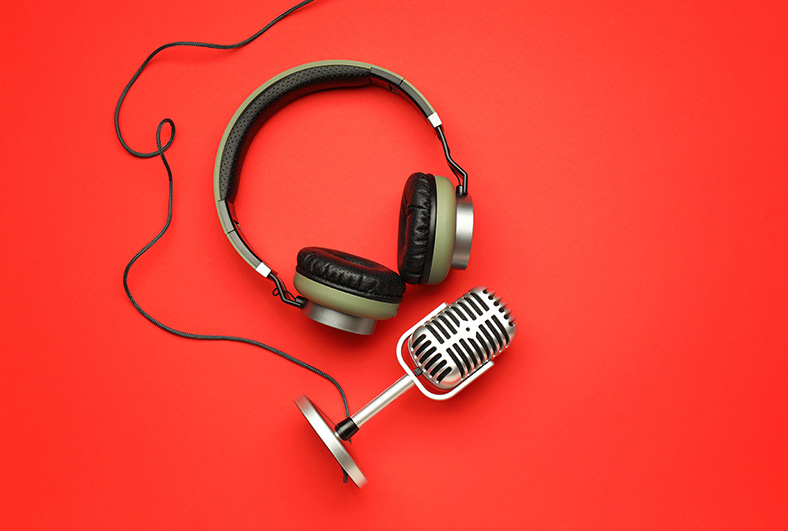Blog / Events / Journalists
Getting into podcasting: Starting out and building an audience

Podcasts have been big business for a number of years now. In 2023, there are 464.7 million podcast listeners globally and this is expected to rise to 504.9 million in 2024. However, despite such a massive audience at your disposal, there are now over 3 million podcasts worldwide meaning a lot more competition.
How can you, therefore, stand out from the crowd in the podcast world? At a recent JournoResources event, Brooke-Jade Millhouse, from the Disabled and Proud podcast, gave advice on what to consider when starting your podcast and how you can grow an audience and community of listeners.
Starting out – The Why, Who and What
First things first when it comes to creating a podcast, Brooke said you need to think about the why. Why do you want to do this and why it’s needed? If you’re not passionate about the topic you have chosen or there’s similar podcasts out there, then you’re unlikely to succeed. Another key thing to consider is who the podcast is for and the purpose it serves for the audience. According to the latest figures, 90% of podcasts do not make it past the third episode. Those that do, 90% will then not make it past episode 20.
Once you know your why and who, Brooke stressed the importance of choosing the right format and the right title for your podcast. These may vary from a collaborative podcast with yourself and another host or it could be more interview based. Then you need to consider whether it will be best as solo episodes or as a series. Brooke also noted that the title needs to be well thought out. Something that is attractive to listeners and contains the keywords they’re going to be searching for.
Choosing the right platform, host and recording software
With all the basics in place, Brooke said your next consideration is what platform to use. Acast, Apple, Spotify and YouTube are the go to platforms for podcasts but it’s good to consider who your audience is. For Brooke, it was important that the podcast was accessible to everyone and YouTube allowed her to use captions so people can watch along as well.
The podcast also needs a host which will send it to the platform or multiple platforms you choose. The main three options are Libsyn, Podbean and Buzzsprout. In terms of equipment, you essentially just need a microphone, some headphones and a laptop. If you are interviewing people in person, then a second microphone would make for better audio quality, advised Brooke.
Finally, you need the recording software. Zoom and Riverside work well for online podcasts. However, for in person interviews, you may need Adobe audition which is paid for as part of the creative cloud. Then when it comes to editing the podcast, Brooke said again this could be done on Adobe or if you’re looking for a free product then Audacity and GarageBand (which is free on Macs) work well.
Planning the episodes and publishing
Before publishing the podcast, Brooke spoke about planning the episodes out and the importance of having a release schedule. It’s also good to look at any competition and see what day they publish to avoid going out at the same time. She also advised to record them in advance and have an emergency episode ready in case anything goes wrong during the recording or editing phase.
Once you’ve got a plan in place, you can then publish your first episode. Brooke said that you will need to ensure that it’s an audio format that the host accepts, normally MP3. This will need to include the episode’s title, description and any relevant tags as well. The description and tags are both important as that’s how listeners will find your podcast. When the podcast is hosted, you will get a RSS feed URL and it can then be submitted to podcast directories, such as Apple and Spotify, and will be available once approved.
Growing your audience
The podcast is now out in the world for the audience to find it, but how are you going to grow its audience? Firstly, you need to use the audience you already have, advised Brooke. This could be one that you have built up on social media or via the outlet you work for, or just friends and family that will want to tune in.
Social media is usually the best way to grow your audience further. Again tags are important here as it’s a way that people will discover your socials. Therefore, if your podcast is about history then make sure #history is included. Brooke also suggested joining podcasting groups on Facebook as a good way to grow your audience, and possibly pick up advice from fellow podcasters.
The final way she suggested to get viewing figures up is by collaborating with another podcaster. If you know someone that covers a similar topic or theme to you and they are more established, then it could be beneficial to reach out to them and see about doing a podcast episode together, or just promoting each other via social media.
In need of spokespeople or experts to come and chat on your fledgling podcast? Then you can source them via the Journalist Enquiry Service. Try it out today via the form here.